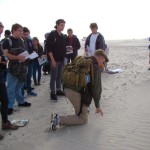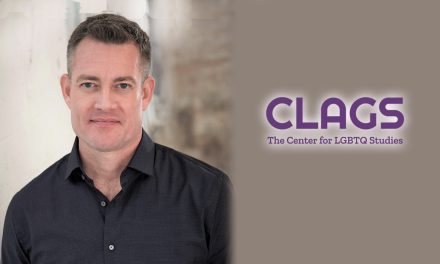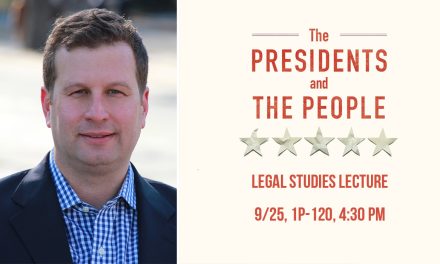Dr. William J. Fritz, Interim President of College of Staten Island, has not forgotten his roots. An internationally acclaimed geologist who has published more than 50 articles and guidebooks on sedimentation around modern and ancient explosive volcanoes—as well as on sedimentology, stratigraphy, and paleobotany—was more than happy when Dr. Alan Benimoff, a lecturer for the Department of Engineering Science and Physics invited him to accompany the Macaulay Honors Geology 101 class, “Planet Earth,” on a field trip to Island Beach State Park in New Jersey on November 2, 2013.
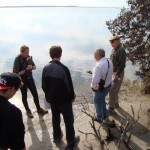
Drs. Fritz, Benimoff, and Alexander familiarize the class with the various formations on the lagoon side of the barrier island, home to a maritime forest with some very specialized vegetation.
Along with the class, the two scientists were accompanied by Dr. Jane Alexander, a fellow lecturer in the Department of Engineering Science and Physics, as they examined various zones of what is conventionally known as “the beach,” to understand the development of barrier islands and to explore the processes that transport and deposit sediment in coastal environments.
Dr. Fritz, an expert on beach formations, took profiles of the beach and showed the class some examples of sedimentation on the beach. As a member of the earth and environmental sciences doctoral faculty at the CUNY Graduate Center, Dr. Fritz explained how storms and hurricanes shape the coastline and took a moment to reflect on the events of Superstorm Sandy.
The group visited several beach zones, including the marsh and lagoon, the maritime forest, the dune field, and the shoreface, among others. The Macaulay Honors students took full advantage of the trip, asking questions throughout and vigorously taking notes as Dr. Fritz pointed out the various beach processes.
Dr. Benimoff believed the all-day field trip to Island Beach was a “fantastic way for students to get a taste of just what being a geologist is like,” referring to the importance of hands-on, practical applications for students from all fields and walks of life. “You can read a book all day,” he continued, “but until you get out there and truly experience it, you will not get a true sense of what is being discussed in a classroom setting.”
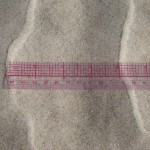
A closer look at the runnel formations and the way scientists measure them in order to get an understanding of sediment transport on the beach.
He also defined CSI’s interim president as a “true academic,” saying that is a “real blessing.” Having a president such as Dr. Fritz, who is an expert geologist, validates the importance of the university as a place where all types of minds can come together and prioritize scholarship above all else.
Macaulay Honors second-year student Austin Krauza—who also happened to be the unofficial photographer of the trip—believed the trip to Island Beach was important because “Field trips are an excellent way of expanding on what you are learning in the classroom. Being able to relate and connect some of the topics you are reading in a black and white text to real life engages me and pushes me to learn more.”
 Krauza, a computer science major who hopes to one day start his own IT support business, has been an avid photographer since he was very young. He was delighted to leave the classroom for some work in the field with our College president. “I was excited to hear that the president of our institution was accompanying us on a field trip. When most people think of their college president, they think of a person in a suit and tie, fundraising and navigating politics. However, in addition to filling those shoes, President Fritz is willing to come into the field to teach and work with students, one on one. I feel that this closes the gap between the college administration and the student body.”
Krauza, a computer science major who hopes to one day start his own IT support business, has been an avid photographer since he was very young. He was delighted to leave the classroom for some work in the field with our College president. “I was excited to hear that the president of our institution was accompanying us on a field trip. When most people think of their college president, they think of a person in a suit and tie, fundraising and navigating politics. However, in addition to filling those shoes, President Fritz is willing to come into the field to teach and work with students, one on one. I feel that this closes the gap between the college administration and the student body.”

![[gallery] MHC students take a class on the beach](https://csitoday.com/wp-content/uploads/2013/12/MHC-Class-Fritz-Benimoff.jpg)
